- Home
- Robert Graves
The White Goddess Page 5
The White Goddess Read online
Page 5
The tales and Romances, on the other hand, are full of colour and incident; even characterization is not absent from them. In them, fancy, not affected by restrictions applying both to subject and form, develops into imagination.
These tales were told by a guild of Welsh minstrels whose status was not regularized by the Laws, who counted no bishops or ministers of State among their associates, and who were at liberty to use whatever diction, themes and metres they pleased. Very little is known about their organization or history, but since they were popularly credited with divinatory and prophetic gifts and the power of injurious satire it is likely that they were descended from the original Welsh master-poets who either refused or were refused court-patronage after the Cymric conquest of Wales. The Cymry, whom we think of as the real Welsh, and from whom the proud court-bards were recruited, were a tribal aristocracy of Brythonic origin holding down a serf-class that was a mixture of Goidels, Brythons, Bronze Age and New Stone Age peoples and Aboriginals; they had invaded Wales from the North of England in the fifth century AD. The non-Cymric minstrels went from village to village, or farm-house to farm-house, entertaining under the trees or in the chimney corner according to the season. It was they who kept alive an astonishingly ancient literary tradition, mainly in the form of popular tales which preserved fragments not only of pre-Cymric, but of pre-Goidelic myth, some of which goes back as far as the Stone Age. Their poetic principles are summed up in a Triad in the Llyfr Goch Hergest (‘The Red Book of Hergest’):
Three things that enrich the poet:
Myths, poetic power, a store of ancient verse.
The two poetic schools did not at first come in contact, the ‘big-bellied’ well-dressed court-bards being forbidden to compose in the minstrel style and penalized if they visited any but the houses of princes or nobles; the lean and ragged minstrels not being privileged to perform at any court, nor trained to use the complicated verse-forms required of the court-bards. However, in the thirteenth century the minstrels were taken up by the Norman-French invaders, apparently through the influence of Breton knights who could understand Welsh and who recognized some of the tales as better versions of those which they had heard at home. The trovères, or finders, translated them into contemporary French and adapted them to the Provençal code of chivalry, and in their new dress they conquered Europe.
Welsh and Norman families now intermarried and it was no longer easy to keep the minstrel out of the courts. In an early thirteenth-century poem one Phylip Brydydd records a contention between himself and certain ‘vulgar rhymesters’ as to who should first present a song on Christmas Day to his patron, Prince Rhys Ieuanc at Llanbadarn Fawr in South Wales. Prince Rhys was a close ally of the Normans. The two thirteenth-century poems which will be here examined are the work of a ‘vulgar rhymester’ – vulgar at least by Philip’s aristocratic canon of what a poet should be. They are called the Câd Goddeu and the Hanes Taliesin.
By the fourteenth century the literary influence of the minstrels began to show even in court poetry, and according to fourteenth-century versions of the bardic statute, Trioedd Kerdd, the Prydydd, or court-bard, might write love-poems, though debarred from satires, lampoons, charms, divination, or lays of magic. It was not until the fifteenth century that the poet Davydd ap Gwilym won approval for a new form, the Kywydd, in which court poetry and minstrel poetry are united. For the most part the court-poets would not modify their obsolescent practice; remaining scornful and jealous of the favour shown to ‘tellers of untruth’. Their position declined with that of their patrons and their authority finally collapsed as a result of the Civil Wars, in which Wales favoured the losing side, shortly before the Cromwellian conquest of Ireland also broke the power of the ollaves, or master-poets, there. Its revival in the bardic Gorsedd of the National Eisteddfod is somewhat of a mock-antique, coloured by early nineteenth-century misconceptions of Druidic practice; yet the Eisteddfod has served to keep alive a public sense of the honour due to poets, and contests for the bardic Chair are as keen as ever.
English poetry has had only a short experience of similar bardic discipline: the Classicism of the eighteenth century, when highly stylized diction and metre and ‘decorum’ of theme were insisted upon by the admirers and imitators of Alexander Pope. A violent reaction followed, the ‘Romantic Revival’; then another partial return to discipline, Victorian Classicism; then a still more violent reaction, the ‘modernistic’ anarchy of the 1920’s and 1930’s. English poets now appear to be considering a voluntary return to discipline: not to the eighteenth-century strait-jacket, nor to the Victorian frock-coat, but to that logic of poetic thought which gives a poem strength and grace. But where can they study metre, diction, and theme? Where can they find any poetic government to which they may yield a willing loyalty? Metre, they would all probably agree, is the norm to which a poet relates his personal rhythm, the original copybook copper-plate from which he gradually develops a unique personal handwriting; unless such a norm is assumed, his rhythmic idiosyncrasies are meaningless. They would also probably agree about diction, that it should be neither over-stylized nor vulgar. But what of theme? Who has ever been able to explain what theme is poetic and what is unpoetic, except by the effect that it has on the reader?
The rediscovery of the lost rudiments of poetry may help to solve the question of theme: if they still have validity they confirm the intuition of the Welsh poet Alun Lewis who wrote just before his death in Burma, in March 1944, of ‘the single poetic theme of Life and Death…the question of what survives of the beloved.’ Granted that there are many themes for the journalist of verse, yet for the poet, as Alun Lewis understood the word, there is no choice. The elements of the single infinitely variable Theme are to be found in certain ancient poetic myths which though manipulated to conform with each epoch of religious change – I use the word ‘myth’ in its strict sense of ‘verbal iconograph’ without the derogatory sense of ‘absurd fiction’ that it has acquired – yet remain constant in general outline. Perfect faithfulness to the Theme affects the reader of a poem with a strange feeling, between delight and horror, of which the purely physical effect is that the hair literally stands on end. A. E. Housman’s test of a true poem was simple and practical: does it make the hairs of one’s chin bristle if one repeats it silently while shaving? But he did not explain why the hairs should bristle.
The ancient Celts carefully distinguished the poet, who was originally a priest and judge as well and whose person was sacrosanct, from the mere gleeman. He was in Irish called fili, a seer; in Welsh derwydd, or oak-seer, which is the probable derivation of ‘Druid’. Even kings came under his moral tutelage. When two armies engaged in battle, the poets of both sides would withdraw together to a hill and there judiciously discuss the fighting. In a sixth-century Welsh poem, the Gododin, it is remarked that ‘the poets of the world assess the men of valour’; and the combatants – whom they often parted by a sudden intervention – would afterwards accept their version of the fight, if worth commemorating in a poem, with reverence as well as pleasure. The gleeman, on the other hand, was a joculator, or entertainer, not a priest: a mere client of the military oligarchs and without the poet’s arduous professional training. He would often make a variety turn of his performance, with mime and tumbling. In Wales he was styled an eirchiad, or suppliant, one who does not belong to an endowed profession but is dependent for his living on the occasional generosity of chieftains. As early as the first century BC we hear from Poseidonius the Stoic of a bag of gold flung to a Celtic gleeman in Gaul, and this at a time when the Druidic system was at its strongest there. If the gleeman’s flattery of his patrons were handsome enough and his song sweetly enough attuned to their mead-sodden minds, they would load him with gold torques and honey cakes; if not, they would pelt him with beef bones. But let a man offer the least indignity to an Irish poet, even centuries after he had forfeited his priestly functions to the Christian cleric, and he would compose a satire on his assailant which would brin
g out black blotches on his face and turn his bowels to water, or throw a ‘madman’s wisp’ in his face and drive him insane; and surviving examples of the cursing poems of the Welsh minstrels show that they were also to be reckoned with. The court-poets of Wales, on the other hand, were forbidden to use curses or satires, and had to depend on legal redress for any insult to their dignity: according to a tenth-century digest of laws affecting the Welsh ‘household bard’ they could demand an eric of ‘nine cows, and nine-score pence of money besides’. The figure nine recalls the nine-fold Muse, their former patroness.
In ancient Ireland the ollave, or master-poet, sat next to the king at table and was privileged, as none else but the queen was, to wear six different colours in his clothes. The word ‘bard’, which in mediaeval Wales stood for a master-poet, had a different sense in Ireland, where it meant an inferior poet who had not passed through the ‘seven degrees of wisdom’ which made him an ollave after a very difficult twelve-year course. The position of the Irish bard is defined in the seventh-century Sequel to the Crith Gabhlach Law: ‘A bard is one without lawful learning but his own intellect’; but in the later Book of Ollaves (bound up in the fourteenth-century Book of Ballymote) it is made clear that to have got as far as the seventh year of his poetic education entitled a student to the ‘failed B.A.’ dignity of bardism. He had memorized only half the prescribed tales and poems, had not studied advanced prosody and metrical composition, and was deficient in knowledge of Old Goidelic. However, the seven years’ course that he had taken was a great deal more severe than that insisted upon in the poetic schools of Wales, where the bards had a proportionately lower status. According to the Welsh Laws, the Penkerdd, or Chief Bard, was only the tenth dignitary at Court and sat on the left of the Heir Apparent, being reckoned equal in honour with the Chief Smith.
The Irish ollave’s chief interest was the refinement of complex poetic truth to exact statement. He knew the history and mythic value of every word he used and can have cared nothing for the ordinary man’s appreciation of his work; he valued only the judgement of his colleagues, whom he seldom met without a lively exchange of poetic wit in extempore verse. Yet it cannot be pretended that he was always true to the Theme. His education, which was a very general one, including history, music, law, science and divination, encouraged him to versify in all these departments of knowledge; so that often Ogma the God of Eloquence seemed more important than Brigit, the Three-fold Muse. And it is a paradox that in mediaeval Wales the admired court-poet had become a client of the prince to whom he addressed formal begging odes and forgotten the Theme almost entirely; while the despised and unendowed minstrel who seemed to be a mere gleeman showed the greater poetic integrity, even though his verse was not so highly polished.
The Anglo-Saxons had no sacrosanct master-poets, but only gleemen; and English poetic lore is borrowed at third hand, by way of the Norman French romances, from ancient British, Gallic and Irish sources. This explains why there is not the same instinctive reverence for the name of poet in the English countryside as there is in the remotest parts of Wales, Ireland and the Highlands. English poets feel obliged to apologize for their calling except when moving in literary circles; they describe themselves to the registrar, or when giving evidence in a law-court, as civil servants, journalists, schoolmasters, novelists, or whatever else they happen to be besides poets. Even the English poet-laureateship was not instituted until the reign of Charles I. (John Skelton’s laurel-crown was a university award for Latin eloquence unconnected with Henry VIII’s patronage of him as a poet.) It does not carry with it any authority over national poetic practice or any obligation to preserve the decencies of poetry, and is awarded, without a contest, by the First Lord of the Treasury, not by any learned society. Nevertheless many English poets have written with exquisite technical skill, and since the twelfth century no generation has been entirely faithless to the Theme. The fact is that though the Anglo-Saxons broke the power of the ancient British chieftains and poets they did not exterminate the peasants, so that the continuity of the ancient British festal system remained unaffected even when the Anglo-Saxons professed Christianity. English social life was based on agriculture, grazing, and hunting, not on industry, and the Theme was still everywhere implicit in the popular celebration of the festivals now known as Candlemas, Lady Day, May Day, Midsummer Day, Lammas, Michaelmas, All-Hallowe’en, and Christmas; it was also secretly preserved as religious doctrine in the covens of the anti-Christian witch-cult. Thus the English, though with no traditional respect for the poet, have a traditional awareness of the Theme.
The Theme, briefly, is the antique story, which falls into thirteen chapters and an epilogue, of the birth, life, death and resurrection of the God of the Waxing Year; the central chapters concern the God’s losing battle with the God of the Waning Year for love of the capricious and all-powerful Threefold Goddess, their mother, bride and layer-out. The poet identifies himself with the God of the Waxing Year and his Muse with the Goddess; the rival is his blood-brother, his other self, his weird. All true poetry – true by Housman’s practical test – celebrates some incident or scene in this very ancient story, and the three main characters are so much a part of our racial inheritance that they not only assert themselves in poetry but recur on occasions of emotional stress in the form of dreams, paranoiac visions and delusions. The weird, or rival, often appears in nightmare as the tall, lean, dark-faced bed-side spectre, or Prince of the Air, who tries to drag the dreamer out through the window, so that he looks back and sees his body still lying rigid in bed; but he takes countless other malevolent or diabolic or serpent-like forms.
The Goddess is a lovely, slender woman with a hooked nose, deathly pale face, lips red as rowan-berries, startlingly blue eyes and long fair hair; she will suddenly transform herself into sow, mare, bitch, vixen, she-ass, weasel, serpent, owl, she-wolf, tigress, mermaid or loathsome hag. Her names and titles are innumerable. In ghost stories she often figures as ‘The White Lady’, and in ancient religions, from the British Isles to the Caucasus, as the ‘White Goddess’. I cannot think of any true poet from Homer onwards who has not independently recorded his experience of her. The test of a poet’s vision, one might say, is the accuracy of his portrayal of the White Goddess and of the island over which she rules. The reason why the hairs stand on end, the eyes water, the throat is constricted, the skin crawls and a shiver runs down the spine when one writes or reads a true poem is that a true poem is necessarily an invocation of the White Goddess, or Muse, the Mother of All Living, the ancient power of fright and lust – the female spider or the queen-bee whose embrace is death. Housman offered a secondary test of true poetry: whether it matches a phrase of Keats’s, ‘everything that reminds me of her goes through me like a spear’. This is equally pertinent to the Theme. Keats was writing under the shadow of death about his Muse, Fanny Brawne; and the ‘spear that roars for blood’ is the traditional weapon of the dark executioner and supplanter.
Sometimes, in reading a poem, the hairs will bristle at an apparently unpeopled and eventless scene described in it, if the elements bespeak her unseen presence clearly enough: for example, when owls hoot, the moon rides like a ship through scudding cloud, trees sway slowly together above a rushing waterfall, and a distant barking of dogs is heard; or when a peal of bells in frosty weather suddenly announces the birth of the New Year.
Despite the deep sensory satisfaction to be derived from Classical poetry, it never makes the hair rise and the heart leap, except where it fails to maintain decorous composure; and this is because of the difference between the attitudes of the Classical poet, and of the true poet, to the White Goddess. This is not to identify the true poet with the Romantic poet. ‘Romantic’, a useful word while it covered the reintroduction into Western Europe, by the writers of verse-romances, of a mystical reverence for woman, has become tainted by indiscriminate use. The typical Romantic poet of the nineteenth century was physically degenerate, or ailing, addicted to drugs and mel
ancholia, critically unbalanced and a true poet only in his fatalistic regard for the Goddess as the mistress who commanded his destiny. The Classical poet, however gifted and industrious, fails to pass the test because he claims to be the Goddess’s master – she is his mistress only in the derogatory sense of one who lives in coquettish ease under his protection. Sometimes, indeed, he is her bawdmaster: he attempts to heighten the appeal of his lines by studding them with ‘beauties’ borrowed from true poems. In Classical Arabic poetry there is a device known as ‘kindling’, in which the poet induces the poetic atmosphere with a luscious prologue about groves, streams and nightingales, and then quickly, before it disperses, turns to the real business in hand – a flattering account, say, of the courage, piety and magnanimity of his patron or sage reflexions on the shortness and uncertainty of human life. In Classical English poetry the artificial kindling process is often protracted to the full length of the piece.

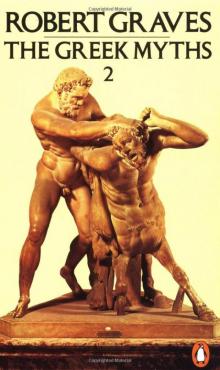 The Greek Myths, Volume2
The Greek Myths, Volume2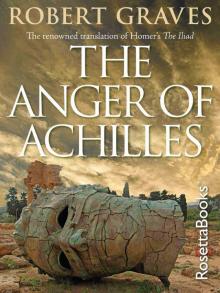 The Anger of Achilles: Homer's Iliad
The Anger of Achilles: Homer's Iliad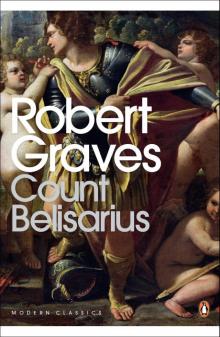 Count Belisarius
Count Belisarius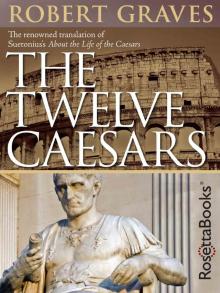 The Twelve Caesars
The Twelve Caesars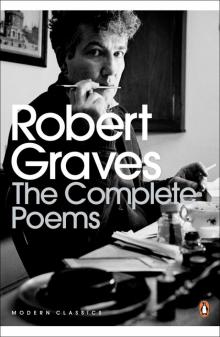 Complete Poems 3 (Robert Graves Programme)
Complete Poems 3 (Robert Graves Programme) Homer's Daughter
Homer's Daughter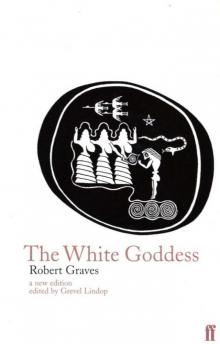 The White Goddess
The White Goddess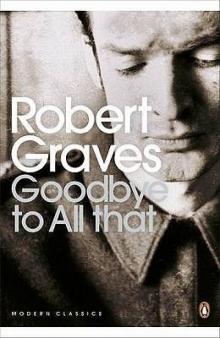 Goodbye to All That
Goodbye to All That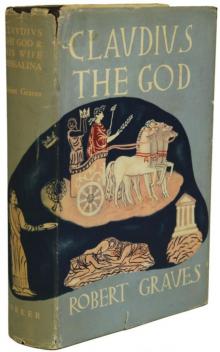 Claudius the God and His Wife Messalina
Claudius the God and His Wife Messalina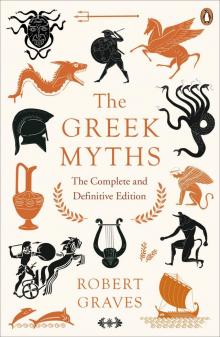 The Greek Myths
The Greek Myths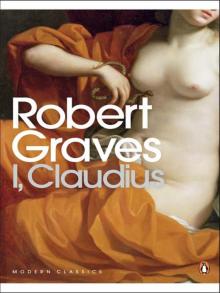 I, Claudius
I, Claudius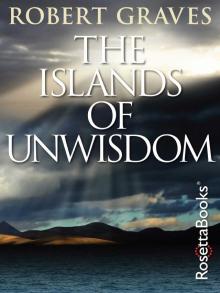 The Islands of Unwisdom
The Islands of Unwisdom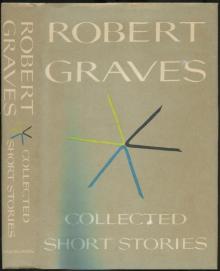 Complete Short Stories
Complete Short Stories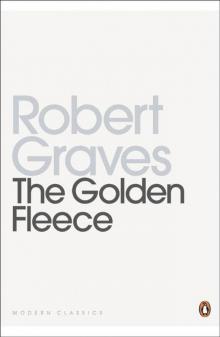 The Golden Fleece
The Golden Fleece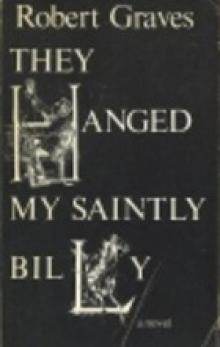 They Hanged My Saintly Billy
They Hanged My Saintly Billy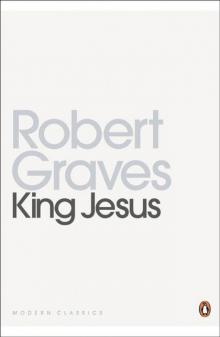 King Jesus
King Jesus Sergeant Lamb's America
Sergeant Lamb's America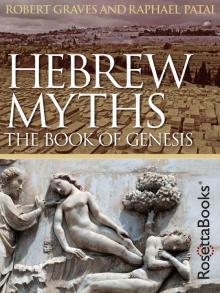 Hebrew Myths: The Book of Genesis
Hebrew Myths: The Book of Genesis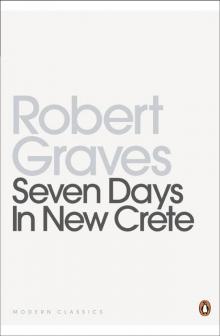 Seven Days in New Crete
Seven Days in New Crete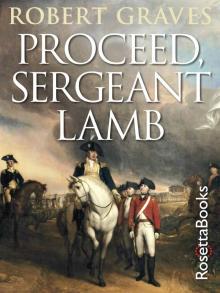 Proceed, Sergeant Lamb
Proceed, Sergeant Lamb Claudius the God
Claudius the God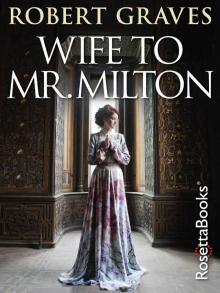 Wife to Mr. Milton
Wife to Mr. Milton The Complete Poems
The Complete Poems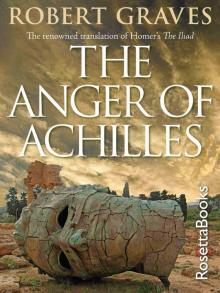 The Anger of Achilles
The Anger of Achilles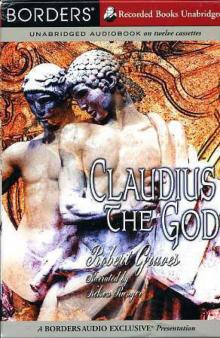 Claudius the God c-2
Claudius the God c-2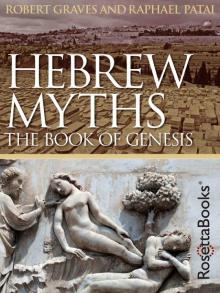 Hebrew Myths
Hebrew Myths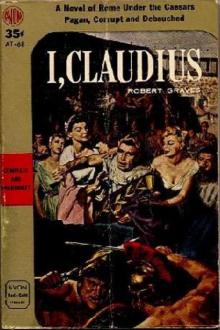 I, Claudius c-1
I, Claudius c-1 The Greek Myths, Volume 1
The Greek Myths, Volume 1